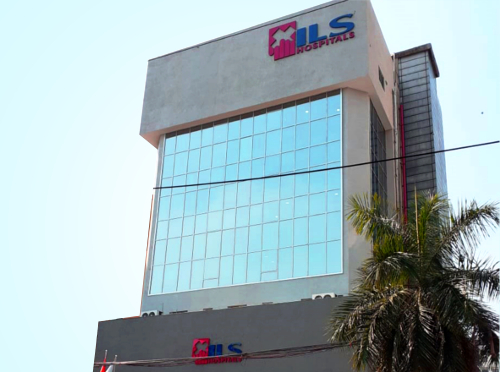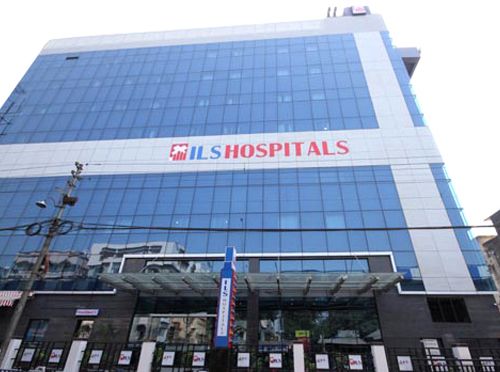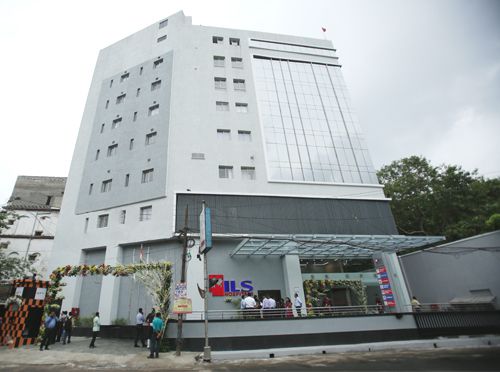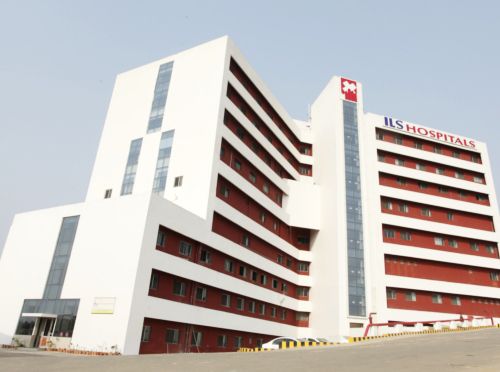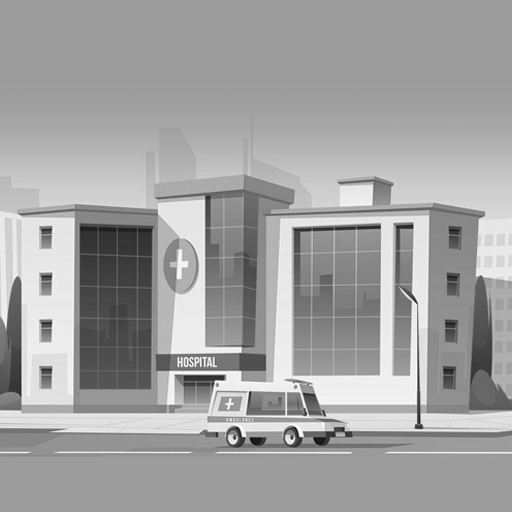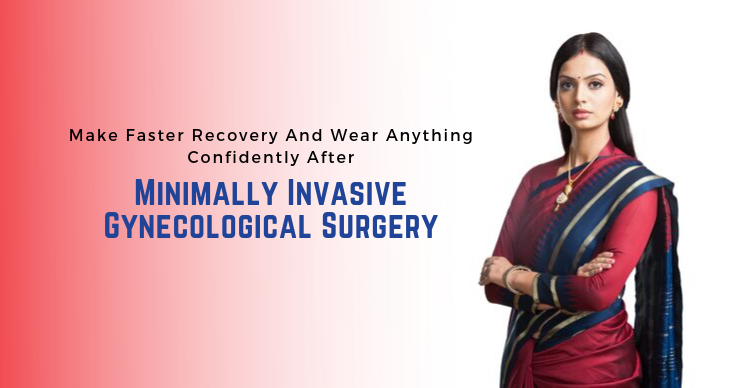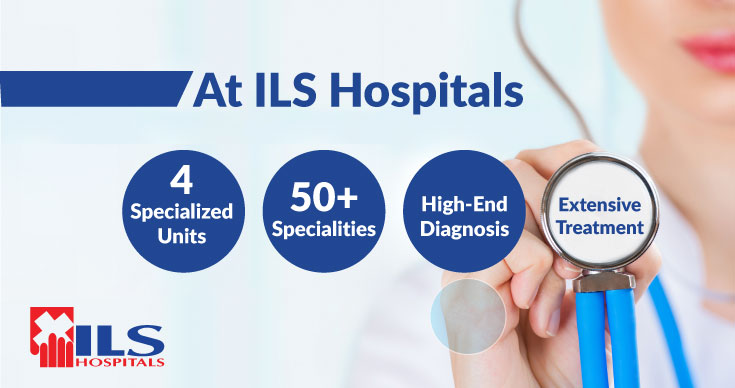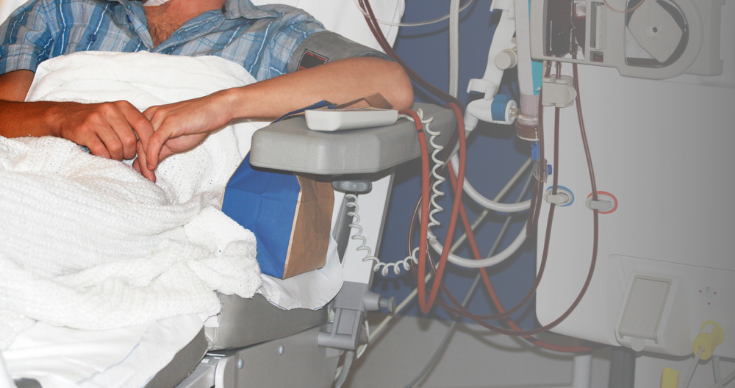10 signs that indicates your child might have autism
In simple words, Autism (Autism Spectrum Disorder) is a neurological spectrum disorder in which the person lacks basic communication (both verbal and non-verbal) skills and social skills. There is no obvious reason behind autism but it is believed by many psychiatrists that ASD in children happens due to heredity, genetic disorders and deformity in the brain structure.
Children show signs of ASD after age 1 or 2 so it’s important for the parents to observe their child’s strange signs. The signs that might indicate that your child is autistic are as follows:
-
Prefers to always stay alone: It’s very odd for a child to prefer being alone than being in the company of other children. Autistic children live in their own world and does not know how to make friends and socially interact with people.
-
Inflexible nature: If your child follows a strict routine even at such a tender age, there is nothing to be proud of because it is a warning sign of ASD. Children with autism religiously follow their fixed schedule and have difficulty while dealing with even the most minor changes in their routine.
-
Repetitive behaviors: Your child may indulge in repetitive behaviors if he or she suffers from autism. The repetitive behaviors include- repeating words or phrases, lining up toys, incessant rocking, staring at lights, twirling, watching moving objects and so on.
-
Does not like physical affection: If your child does not like to be cuddled or even given a pat on the back, or be embraced when upset, it may indicate autism disorder.
-
Disinterested, unaware and unresponsive: A very unusual sign of autism is no eye contact which is seriously worrying for many parents. If your child always seems detached from the world and does not respond to you at all and appears to you deaf, chances are your child has autism.
-
Robot-like personality: Observe whether your child speaks in a flat robot-like tone with no emotions, has atypical posture and if walks on tiptoes.
-
Obsessive behavior: If your child has an obsession and special interest for certain topics and always craves for precise factual information, it can be a sign of ASD. OCD (Over- Compulsive disorder) and Autism go hand in hand so do watch for such signals and talk to a child psychiatrist.
-
Highly unemotional:Autistic children do not show even the basic human emotion in their speech, facial expressions and do not understand anyone’s feelings nor can relate to them. They may look aloof and cold to the entire world but the simple fact remains that they are poor at expressing themselves.
-
Self-harming behavior: Notice if your child practice self-injurious behavior like headbanging, self-scratching, hair pulling and face or head-slapping. Self-harm behavior is harmful and requires medical attention so consult a paediatric psychiatrist if your child physically harms him/herself.
-
Meltdowns: If your child has frequent meltdowns, it can make your life troublesome. There is a difference between normal tantrums and autistic meltdowns, so do not confuse the two and seek professional help, if needed.
Thus, if you notice the above-mentioned signs in your child, consider consulting a child psychiatrist without any delay. We, at ILS Hospitals, have trained and compassionate psychiatrists who will provide your child with the supportive care and counseling needed to better his or her life.
Important Aspect of Lower G.I. (Colorectal) Diseases And Its Treatments
The digestive tract or the Gastrointestinal (GI) tract comprises of several organs that help with the intake of food, the absorption of nutrients from it and remove the waste from the body.
 The human gut comprises of upper part and a lower part. The lower part consists of most of the small intestine, all of the large intestine, rectum and anus. There can be a number of diseases affecting this lower part, both in innocuous way and in overt way. The trivial symptoms like weakness, weight loss, occasional bleeding with stool are many times ignored resulting in delayed diagnosis and treatment. There may or may not be familial or inherited trait toward developing bowel cancer. Many of these, if diagnosed and treated at an early stage, can be completely cured.
The human gut comprises of upper part and a lower part. The lower part consists of most of the small intestine, all of the large intestine, rectum and anus. There can be a number of diseases affecting this lower part, both in innocuous way and in overt way. The trivial symptoms like weakness, weight loss, occasional bleeding with stool are many times ignored resulting in delayed diagnosis and treatment. There may or may not be familial or inherited trait toward developing bowel cancer. Many of these, if diagnosed and treated at an early stage, can be completely cured.
Following are the few GI diseases –
- Colorectal cancer and benign pathologies
 These cancers can be very silent to start with and may not be detected without careful attention on part of the patients and the doctors together. To make the matter worse, they can spread from one place to another rather quickly. There lies the importance of early screening and thorough check up. Generaly early diagnosis and intervention can provide complete cure from these cancers and a normal life.
These cancers can be very silent to start with and may not be detected without careful attention on part of the patients and the doctors together. To make the matter worse, they can spread from one place to another rather quickly. There lies the importance of early screening and thorough check up. Generaly early diagnosis and intervention can provide complete cure from these cancers and a normal life.
- Benign anorectal pathologies
 Anal fissure, fistula or haemorrhoids (piles) can have severe implication on quality of life. They may be early signs of more sinister pathologies like cancer as well. Proper vigilance and timely treatment can cure most of them and ensure return to a healthy normal life.
Anal fissure, fistula or haemorrhoids (piles) can have severe implication on quality of life. They may be early signs of more sinister pathologies like cancer as well. Proper vigilance and timely treatment can cure most of them and ensure return to a healthy normal life.
- Inflammatory bowel disease, e.g. Crohn’s disease, ulcerative colitis
 This can be a debilitating condition affecting quality of life. It may affect other systems of the body and may even lead to cancer eventually. Combination of medicine and surgery is the only key to treat this problem.
This can be a debilitating condition affecting quality of life. It may affect other systems of the body and may even lead to cancer eventually. Combination of medicine and surgery is the only key to treat this problem.
- Pre-malignant bowel pathologies like polyps or polyposis syndrome
 While most of the polyps are benign, yet some of them may turn out to be malignant and it is difficult to know which one will. That makes regular check up more important to allow early detection and intervention for those cancerous polyps leading to complete cure.
While most of the polyps are benign, yet some of them may turn out to be malignant and it is difficult to know which one will. That makes regular check up more important to allow early detection and intervention for those cancerous polyps leading to complete cure.
- Small intestinal pathologies like GIST (Gastrointestinal Stromal Tumour)
 These tumours can produce non-specific symptoms or bowel obstruction. They are amenable to combined medical and surgical management which can ensure good result.
These tumours can produce non-specific symptoms or bowel obstruction. They are amenable to combined medical and surgical management which can ensure good result.
- Stoma care including management of stoma-related hernias
 Many a times people have to live with a stoma after operation. While most of these people live a perfectly normal life, sometimes these can be complicated with hernia. Timely repair can restore body image and avoid further complications like obstruction, necrosis.
Many a times people have to live with a stoma after operation. While most of these people live a perfectly normal life, sometimes these can be complicated with hernia. Timely repair can restore body image and avoid further complications like obstruction, necrosis.
The Lower G.I. division of ILS Hospitals comprises of a group of highly trained doctors and paramedical personnel. The medical group consists of surgeons, gastroenterologists, oncologists, radiologists and pathologists. The paramedical group has the specialist nurse, stoma care provider and nutritionists. The department has state of the art operating theatre, endoscopy suites and equipment for most modern modes of colorectal and anorectal bowel problems.
Most of the operations are done here by laparoscopic or key-hole surgery, and also by SILS (single incision laparoscopic surgery) or TEMS (Trans-anal Endoscopic Microsurgery). This has been the trend over the last decade which gets people back to their normal life significantly quicker than the conventional surgery.
So, in case you are suffering from any colorectal condition and are looking for some extensive treatment then come at ILS Hospitals now in order to get the best, advanced treatment under the guidance of our eminent doctors.
 Dr Atindriya Biswas, a renowned laparoscopic colorectal surgeon lends his hands to support and realize this vision to establish and run colorectal service at ILS Hospitals. Dr. Biswas has been extensively trained in India and UK. He has been a surgical consultant in UK centers and some of the apex Indian institutes like Apollo Gleneagles Hospital and Tata Medical Center. He performs most of the procedures by laparoscopy or endoscopy.
Dr Atindriya Biswas, a renowned laparoscopic colorectal surgeon lends his hands to support and realize this vision to establish and run colorectal service at ILS Hospitals. Dr. Biswas has been extensively trained in India and UK. He has been a surgical consultant in UK centers and some of the apex Indian institutes like Apollo Gleneagles Hospital and Tata Medical Center. He performs most of the procedures by laparoscopy or endoscopy.
Call: ILS Hospitals Salt Lake: 033-40206500 | Dumdum: 033-40315000
Acnes And Pimples – When Its Time To Consult A Dermatologist
For many health issues we often go with self-perception, it is applicable for the skin related issues as well. However, there are many skin diseases for which it is crucial to consult a dermatologist. Even many times having a skin issues like the acnes and pimples are also very hard to handle on its own. Here we present some tips on when you should seek a dermatologist for acnes and pimples.
1. Over-the-counter medicines are not working for you
In case acnes are not something new for you, chances are there, it usually goes away with some over-the-counter pills or topical lotion. But if these are not working anymore, then perhaps you are dealing with something more severe this time. So, its time to go for the prescribed medicines to treat it properly.
2. Your pimple cause pain when you touch them
Though poking a pimple or acne is a bad idea, it is inevitable to touch them either to put medicine or accidentally. In case it cause pain or over sensitivity, it is crucial to get it addressed as soon as possible. Painful acne is more than a cosmetic issue because it can indicate some underlying infection as well. Needless to say, it requires medical attention.
3. Your acne keeps coming back
In case your acne is not getting cured for a long time or keeps coming back again and again, your skin needs proper attention. Getting in touch with a dermatologist is the best way to prevent these unpleasant infections again and again.
4. Acne is causing depression or low esteem
Having a face full of pimples or acne can take a toll on mental health as well. It is particularly hard if you are a young woman who is still attending school, college, etc and can face embarrassment and bullying for your skin. Moreover, in case you are likely to attend some wedding or function, it is best to let a professional handle your skin for you.
5. Your acne leaves mark on your skin
In case your acne is all resolved but it leaves pigmentation afterwards, you should get it checked by a dermatologist. These marks can look severe for some patients and cause depression. So it’s better to take action to make sure acne goes away without any trace.
6. Acne On Other Body Parts
In case acne is on your other body parts as well like back, arms, neck, chest or lower abdomen, you need to be more careful. It indicates that your skin is too prone to have pimple and acnes. Moreover, pricking these acnes can cause infection to spread. So, it is best to consult a dermatologist for safe and effective treatment.
In case you are dealing with any of the above-mentioned issues, it is best to seek consultation from a dermatologist. ILS Hospitals have many expert dermatologists that offer treatment for many skin related diseases.
Make Faster Recovery And Wear Anything Confidently After Minimally Invasive Gynecological Surgery
Being a woman is hard in many aspects. You go through many phases in life and nurture not only yourself but also the lives of your loved ones. But when it comes to your health, many women are not even aware or concerned about it unless it becomes too severe. Many illnesses loom over women, particularly that require gynecological surgery. Many gynecologists in Kolkata often find that a lot of women do not prefer to undergo surgery and look for oral medicinal treatment instead even if a surgery is vital for them. There are 2 main reasons for the same, they assume –
- It will be painful and need much recovery time and they will not be able to fulfill their duties in personal and professional lives.
- It will leave big scares in their abdominal or pelvic region and thereby will make it look unattractive.
Today we will focus on the Minimally Invasive Gynecological Surgery (MIGS) and how it overcomes the Drawbacks of Open Surgery.
Gynecological surgery implies surgical treatment of the organs in the female reproductive system. It is done to address problems like uterine inconsistency, infertility, removing tumors (both benign and malignant) and carry out procedures like hysterectomy or tubal ligation.
Earlier all these procedures were carried out by making a large incision across the abdomen or pelvic region. It used to leave large scares throughout life. Though certain medication can help the stitch marks to fade over time, it still remains distinguishable and thus, many women feel embarrassed to wear sarees and lehengas after surgery.
Modern medical science has the perfect solution for the same, in the form of minimally invasive gynecological surgery. These surgeries are carried out through a few minute incisions made near the abdomen. Some special equipment, camera, and light sources are inserted inside the abdominal or pelvic cavity and the doctor carries out the surgery through the same. Once the procedure is over, the incisions are closed using stitches.
As the surgery does not expose the internal organs, it offers multiple advantages, such as
- Lesser risks of operation such as bleeding, infection, injury to the nearby organs
- Much lesser need for blood transfusion (almost nill)
- Lesser risks after the operation such as swelling and infection of the surgical site
- Less painful
- Early discharge from the hospital
- Faster recovery
- Much early resuming to daily life works
- Better aesthetic look of the abdominal/pelvic region as the procedure is almost scarless
So, in case you too are looking forward to having any gynecological surgery, come at ILS Hospitals, as we offer MIGS for a wide range of gynecological procedure.
For more information visit us now!
Is Your Child Suffering From Umbilical Hernia? Here Is What You Need To Do
In case you have an infant baby at home, you are probably losing good night’s sleep to feed them, change their diapers and stroke them to sleep while they are crying. This is natural and when they will grow up, you can set back in your routine sleeping schedules. But while they cry, do you often notice a small lump near their belly button? If yes, then you need to pay more attention to the same, as it is likely to be a case of umbilical hernia.
Even though your baby is having a hernia in infancy, it does not mean that you should be scared or panic. Having a hernia is not a threat and it is more common than you might think. 1 to 2 out of every 10 babies has an umbilical hernia. An umbilical hernia is nothing but a condition, in which some portion of the abdomen (fat, intestine, etc) pushes through the layer of the stomach, usually near the navel region. This happens when the muscles and tissues around the umbilical cord fail to close after birth (as they ideally do for most babies).
Usually, a hernia can develop anytime before the child is 6 months old and there are high chances that it will be resolved on its own by the time the child reaches the age of 2 years. However, many a time, you need to have a hernia treatment as well as surgery to get it fixed. This is applicable if,
- You child visibility seems to be in pain due to the hernia.
- The hernia does not resolve on its own, even when the child reaches the age 2 or more.
- The hernia is quite big.
- The hernia keeps growing in size with time.
You can consider hernia treatment before the child reaches the age 5 to ensure it does not create any hindrance in their path of study and normal life.
It has been found more common in babies with low birth weight or premature birth, but it can happen to any child in general. In case you find a lump near the belly button of your infant, get it checked from a pediatrician. Though they might not need surgery, it is crucial to keep tracks of its size and symptoms with time. ILS Hospitals have expert pediatricians to help your child lead a healthy life ahead.
Possible Reasons For Fast Heartbeat That You Should Watch Out For
Do you often feel anxious due to having a fast heartbeat?
Before you panic assuming it to be a cardiac emergency, take a minute out and breathe. First, you need to know what exactly implies having a fast heartbeat. Heart function is measured in the number of times it beats in a minute. Between 60 to 100 is assumed to be normal and any heart rate above 100 beats/minute is a fast heartbeat or medically termed as tachycardia. As per cardiologists from best heart hospitals, there can be many reasons for the fast heartbeat and today, we will list the most common reasons for the same. So, let us start.
1. You Have A Heart Condition
The most obvious reason for the fast heartbeat is the presence of a heart condition. Let it be an arrhythmia or some medicine you are taking to keep your heart healthy; heart problem often leads to either tachycardia or bradycardia (a condition in which heartbeat is below 60).
2. You Are In Stress
In case you are stressed due to personal or professional issues, it reflects on your health immensely. Stress, anxiety and panic attack can lead to having a racing heart.
3. You Are Physically Exhorting Yourself
In case you are exercising, riding a bicycle or climbing stairs, you are exercising your muscle. These vigorous movements demand more oxygen and the heart has to pump extra beats to meet this demand. As a result, you have a faster heartbeat.
4. You Are Consuming Too Much Caffeine
Caffeine if taken in surplus amount can release adrenaline. So, let it be hot brewing coffee or caffeinated cold beverages, having too much caffeine in your body can make your heart race.
5. You Are Sleep Deprived
It is recommended to have a sleep of 6 to 8 hours, each day. Getting inadequate sleep can cause fatigue and excess adrenalin release, which in turn leads to a faster heartbeat than usual.
6. You Are Down With Cold Or Fever
In case you have a cold, fever, sneezing or coughing, you are likely to have an elevated heart rate as well. When the immune system tries to cope up with mild cold and infection, it works extra hard and thus the heart beats more than usual.
7. You Are Pregnant
In the case of women, being pregnant demands a lot physically as they nurture the growing baby for nine months. Though it is completely normal for pregnant women to have a faster heartbeat, it is crucial to keep tabs on it from time to time.
8. You Have Anemia
Anemia is a condition in which the blood does not carry oxygen properly throughout the body. Thus the heart works much exhaustively to carry oxygen and leads to an uplifted heartbeat.
So, in case you too are having a persistent fast heartbeat, evaluate the reason at the best heart hospitals.
What Are Multispeciality Hospitals And How Are They More Beneficial Than General Hospital
Even though we all thrive to stay healthy, staying disease-free is always not so easy in reality. Often you need to go to the hospital and clinics to seek consultation from the doctors and get medical screening at the diagnostic centers or pathology labs. While you look for the best hospital, you are certain to come across 2 types of hospitals, general and multispeciality hospitals. Today, we will define what are multispeciality hospitals and how they are more beneficial than general hospitals.
General hospitals are a non-specialized healthcare provider that offers primary and general treatment for patients with all types of medical conditions. Multispecialty Hospital, on the other hand, addresses different branches of medicine under one roof and also offer surgical treatment and diagnostic services. ILS Hospitals is a well-known group of multispeciality hospitals that offers quality healthcare for people at an affordable price. It has 4 units, at Salt Lake, Dumdum, Howrah, and Agartala.
Here we list out some advantages that multispeciality hospitals offer.
1. Numerous medical specialties under one roof, which includes, but not limited to the following:
General Medicine, ENT, GI specialist, Dermatology, General Surgery, Opthalmology, Neuro medicine, Neurosurgeon, Cardiologist, Cardiothoracic surgeon, Pulmonology, Rheumatology, Orthopedic, Gynecology & Obstetrics, Nephrology, Pediatrics, Urology, Endocrinology, Plastic surgery, Dentistry and many more.
You can also find inter-specialties such as Neuro-Ophthalmology which is an interdisciplinary specialty between neurology and Opthalmology. It focuses on the diseases that originate due to some neurological reasons and affect the vision of the patient.
2. It offers high-end diagnostics which includes both general pathologies such as blood profile screening, x-ray scanning, USG, along with critical diagnosis such as cath lab, doppler test, etc.
3. It stays open all day, all around the year and also offers treatment for medical emergencies. It offers 24/ 7 emergency service, along with ambulance services, pharmacy, assistance with the blood bank, ICU, NICU, PICU, etc.
So, as you can clearly see, going to a multispeciality hospital is a much advantageous decision. In case you are not sure which doctor you should refer too, coming to a multispeciality hospital is your best option as they will help you get in touch with the most suitable doctor.
ILS Hospitals is a multispeciality hospital that offers extensive treatment. Come at ILS Hospitals to address a wide range of health conditions.
Important Signs Of Ear Infections You Should Watch Out For
Are you feeling pain or fullness in your ears for some time? Not sure if it is serious enough for you to seek a doctor yet? It is sometimes difficult to diagnose the symptoms of ear infection. Infections mostly occur in the middle and inner ear and accordingly their symptoms may differ.
Today, we will list out some most common signs of ear infection.
1. Pain Or Discomfort In The Ears
Mild pain or discomfort inside the ear that can either stay persistent or happen from time to time.
2. Fullness In-Ear
Having a feeling that the ears are filled with some fluid that causes irritation or blockage
3. Hearing Loss
Reduced ability to hear properly is a warning sign of severe ear conditions, that requires immediate medical attention.
4. Persistent Pressure In The Ear
Having constant pressure inside the ear, (like you experience during a flight) that may or may not cause pain.
5. Pus Drainage From The Ears
Having fluid discharge from the ears that may or may not contain residue of blood. It may also be accompanied by swelling and redness in the ears.
6. Bulging Of The Ear Drum
Puffed up eardrums must be addressed at the earliest as it may indicate severe infection. It may also imply having ear perforation or collapse.
7. Dizziness Or Spinning Sensation
Feeling dizzy or experiencing vertigo without any other probable cause such as traveling in a hilly region etc.
8. Loss Of Balance
Having imbalanced while standing up and walking, without reasons such as dizziness or weakness.
9. Ringing In Ears
Hearing a ringing sound in the ears that might either be persistent or periodic.
10. Nausea and Vomiting
Feeling nauseated or throwing up without any other relevant cause that keeps on happening again and again.
11. Irritation And Fuzziness In Young Children
In case the young children are having an ear infection, you can see them crying, fuzzing and touching their ears again and again.
Please take note that these symptoms might affect either one or both ears. Ear infections are quite easy to treat with over-the-counter medicines and ear drops. But, if left untreated, it can lead to severe complications in the future like loss of hearing. So, in case you come across any of these above-mentioned symptoms for more than 1-2 weeks, it is best to get it checked from an ENT specialist. Visit us to know more about it.
How To Prepare For Dialysis – A Patient’s Guide
Kidneys perform the function of purifying the blood, remove excess water and toxins from the body. Dialysis is a procedure that works like artificial kidneys and purifies the blood with the help of advanced machinery. It is done for the people whose kidneys cannot perform its functions anymore.
There are several types of dialysis and it is more common than you might be assuming. However, when a patient is first told that they will need to undergo dialysis, they get scared. Today, we will offer some useful tips regarding how to prepare yourself for dialysis.
Usually, your Dialysis will be done 1 to 4 times a week, and each session takes around 3 to 4 hours. You need to keep the access site clean by washing it before dialysis. Keep your face and access site visible for the staff to keep an eye on, all the time during the process. Dialysis is not generally painful, so while the process goes on, you can be relaxed. You can either read a book/newspaper, watch TV, listen to music or even sleep. Since the machine filters, the blood outside the body and then it is injected back in the body, you might feel cold during the process. So, you can ask for blankets to help you stay warm.
There are some minute complications and side effects that are associated with dialysis. Some occur near the site of injection, these include:
- Bleeding
- Swelling
- Redness
- Tenderness
- Muscle pain
Other side effects are
- Dizziness
- Nausea
- Chest pain
- Breathlessness
- Cramps
- High/low blood pressure
After the dialysis, frequent urination and bloating are quite common. You can also feel very tired and can have body aches. You may need to take rest for the rest of the day as well.
Dialysis can be done at a hospital, doctor’s clinic, pathology center or even at home. However, you and your family members need to have the proper training for the same. Also, it is best to get a doctor or medical staff to oversee the procedure from time to time.
It is quite crucial to ensure that you do not miss your dialysis schedule. However, if you are sick or traveling, you cannot help missing 1 or 2 dialysis sessions. So, in case this happens in your case, don’t forget to inform about the same in advance to your doctor or the team and make arrangements accordingly.
ILS Hospitals offer dialysis facility for the patients suffering from renal damage.
Liver Diseases – Causes And Symptoms
The liver is the largest organ in our body. It helps in digesting our food, stores energy and removes unwanted substances from the body. It is situated right under your rib cage on the right side of your abdomen. Like every organ, the liver can have diseases too. Liver diseases can be genetic or due to pathogens or the consumption of excess alcohol. There are various liver treatment approaches depending on the type of diseases. But how would you know if you have any liver disease? Today, we will discuss some of the symptoms that help detect liver diseases and also, which type of disease is caused by what.
Signs and symptoms of liver disease include:
- Skin and eyes appear yellowish: This is the most common symptom which usually means that you might have jaundice.
- Abdominal pain and swelling: If you are feeling pain and swelling in abdomen regularly, it means your liver is not functioning properly, leading to inflammation of the liver.
- Swelling in the legs and ankles: Due to liver disease, the secretion of a protein named Albumin can become inadequate and can cause fluid leakage known as edema. Due to gravity, this fluid gets deposited in the legs and ankles, causing their swelling.
- Itchy skin: It is caused due to the bile products deposited in the skin.
- Chronic fatigue: This is another common symptom for people with liver problems.
- Nausea or vomiting: If your digestive system is not working properly due to liver problems then you would feel nauseous and it becomes hard to keep your food down which also leads to loss of appetite.
Liver disease has many causes:
- Infection: Liver diseases can occur due to infection by Parasites and viruses causing inflammation that reduces liver function. These viruses can spread through blood, contaminated food or water, or close contact with an infected person. The common types of liver infection are hepatitis viruses, including Hepatitis A, Hepatitis B, and Hepatitis C.
- Immune system abnormality: Some autoimmune liver diseases include Autoimmune hepatitis, primary biliary cirrhosis, etc can affect your liver system as well.
- Genetics: Liver diseases can be genetic where an abnormal gene is inherited from one or both of your parents causing various substances to build up in your liver, and thus resulting in liver damage. Some genetic liver diseases include Hemochromatosis, Hyperoxaluria, and oxalosis, Wilson’s disease, alpha-1 antitrypsin deficiency.
- Cancer and other growth: Liver cancer is a severe liver disease. There are various reasons for liver cancer. One of the reasons doctors have found is regular and heavy alcohol consumption. Another type of cancer is bile duct cancer which also happens due to the same reasons.
- Fat accumulating in the liver: Eating unhealthy food is pretty common these days which is why fat accumulation in the liver has become very common as well.
If you have any of the aforementioned symptoms, it might imply that you have some underlying liver disease. It is best to get these symptoms evaluated and avail liver treatment as soon as possible, to lead a healthier life ahead.


